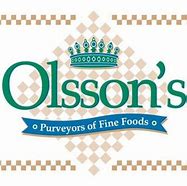 Loading... Please wait...
Loading... Please wait...- Telephone: 609 924 2210
- Home
- My Account
- View Cart
It's Crunch Time
Posted by The Cheese Man on 2nd Jul 2019

Have you ever wondered what those crunchy bits are in some types of cheese? Well, here is some background information on them. First thing you need to determine is whether you found those crunchies on the outside or on the inside of a cheese. If you only found them on the inside you will have experienced what it is like to bite into a crystal formation that is called tyrosine. Tyrosine is formed when the amino acid chains or proteins in the milk curds fall apart leaving behind a crystalline deposit. The crystals do not greatly affect the flavor and taste profile but definitely change the mouthfeel experience of the cheese. For a long time they were seen as a blemish, it is only relatively recently that placement and cleanness of the crunch are part of the scoring in cheese contests. Look for these crunchies in cheeses like aged Goudas, Parmesan, aged Gruyere.
When you
experience the crunch just on the outside of the cheese, you may have –
accidentally? – bitten into a bit of the rind of a brined cheese. The brine is
used to deposit sought-after bacteria on the outside of the cheese with the
idea that the good bacteria will ward off the bad bacteria and also develop
flavors deeper within the cheese. It is always a good idea to go carefully with
the rinds of very aromatic cheeses like Munster d’Alsace, Grayson, Taleggio.
If you see white deposits on the outside of the cheese and experience crunchies on the inside of the cheese, you may have found deposits of calcium lactate. Generally, these crystals tend to be a bit softer and lighter in color than the tyrosine crystals and a taste test to compare the crystals on the inside to those on the outside will tell all. They are a result of lactic acid combining with ionic calcium in high moisture cheese. We find the calcium lactate crystals especially on aged Cheddars that have higher moisture levels in the paste, i.e. the typical block or brick-style Cheddars produced in North America that are allowed to have liquid on the outside of the cheese that when dried forms “pools” of calcium lactate.

Have fun doing some crunchie experimentation!
